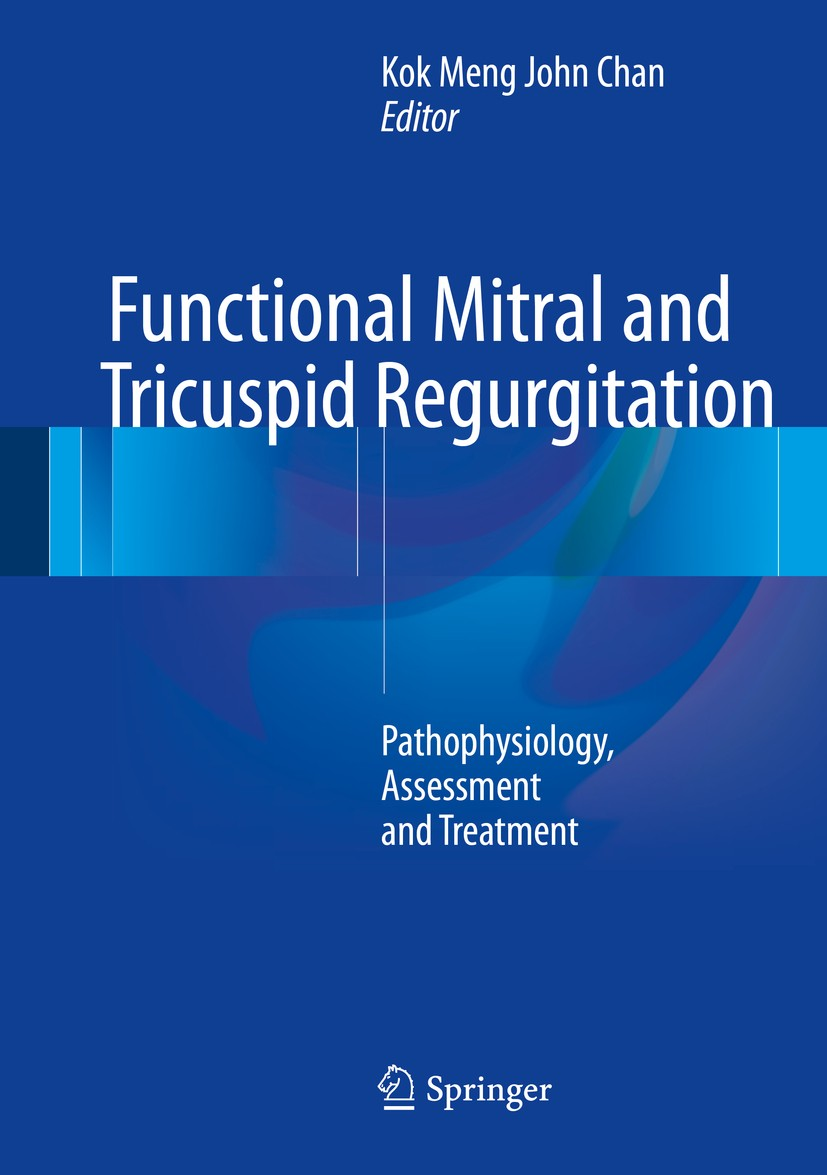ALERT!
This site is not optimized for Internet Explorer 8 (or older).
Please upgrade to a newer version of Internet Explorer or use an alternate browser such as Chrome or Firefox.
Book Review: Functional Mitral and Tricuspid Regurgitation
 Functional Mitral and Tricuspid Regurgitation
Functional Mitral and Tricuspid Regurgitation
Kok Meng John Chan, Editor
Springer International Publishing, Switzerland, 2017
ISBN 978-3-319-82842-8, 222 pages, $109.99 (USD)
Functional mitral and tricuspid insufficiency are stout nuts to crack for any cardiothoracic surgeon. Their uniqueness lies in being “functionally” impaired, secondary to a disease affecting the ventricles. Both conditions carry adverse outcomes and the propensity to deteriorate into congestive heart failure. The understanding of insufficient atrioventricular valves has drastically improved over time with experience and emergence of newer modalities that have the potential to define the cause. That being said, the jury is still out in decoding the enigma of whom to repair: just the ventricle, just the valve, or perhaps both? This unique subset remains the cornerstone in the learning curve of any heart valve surgeon.
The second enigma in this disease is to find a one-stop shop resource for the right answers. Fortunately, that question has been answered by this publication, which addresses all aspects of functional mitral and tricuspid insufficiency. The concise publication of 228 pages comes as a single volume split into two halves: one for each valve. Its twenty-six chapters detail virtually every aspect there is to know about the pathophysiology, surgical management, evolving technologies, and the outcomes of patients receiving treatment.
The chapters are arranged in a manner that closely resembles the most obvious and logical methodology of charting strategies. The initial portions of both halves discuss the functional physiology and pathophysiology of insufficient valves, their natural history, and assessment by echocardiography and magnetic resonance imaging. The first part discusses the merits and hits in the surgery for ischemic cardiomyopathy with surgical coronary revascularization and mitral valve repair. This discussion highlights the techniques available to reaugment the leaflet, annulus, and subvalvar apparatus. Furthermore, the resurgence of ventricular remodeling procedures and their role in addressing ventricular dysfunction and thereby insufficiency, percutaneous approaches, outcomes, and comparison of techniques are described in detail. The techniques and outcomes of isolated valve repair for nonischemic cardiomyopathy follows in the first half. Finally, these aspects are summarized with outcomes assimilated from systematic reviews, case cohort series, and randomized control trials.
In the second half, the true strengths of ring and suture annuloplasty for tricuspid insufficiency are presented with clear guidelines. The principles of repair and techniques to remodel the tricuspid apparatus, from simple posterior leaflet obliteration to complex papillary muscle translocation, are illustrated in detail. The outcomes of each technique follow each set of illustrations. Both halves conclude with chapters on transcatheter approaches that are emerging in the profession to mitigate functional regurgitation, comparative analysis of outcomes and trends, as well as futuristic propositions to strengthen outcomes of procedures.
This text was originally published in 2017. Unfortunately, the resource has not been credited enough in literature or by word of mouth in the community. That’s certainly not the fault of the work. This publication rightly deserves to be referred to as the textbook for the management of functional insufficiency of the valves. The text effectively puts together the mechanism and sequelae of the disease, basis behind the surgical correction, and rationale of emerging modalities to-the-point. This is all transcribed at a time when whirlwinds of information threaten the comprehension of industry knowledge and insights. This feat is no child’s play.
Inevitably—and rightly so—it is better late than never to acknowledge the work created by Dr. Kok Meng John Chan. Dr. Chan is consultant cardiothoracic surgeon at the Gleneagles Intes Medical Center in Kuala Lumpur, Malaysia. His book finds inspiration and precedence from his doctoral thesis and the Hunterian lecture awarded by the Royal College of Surgeons on the same topic. He is joined by a remarkable group of subject matter experts from around the world who are authorities on this subject. Their collective experience and unique perspectives being brought together on this subject makes the textbook a global obiter dictum.
We believe this textbook will provide all caregivers of the heart team a comprehensive understanding of the disease, its management, and key factors that influence outcomes. At a time and age when much is being spoken and written about the ways to manage heart failure with savvy gadgets, surgeons can finally get their hands on a compendium of all there is to know about this disease at present. Furthermore, they can learn the essential working solutions for the disease through the book. Readers will undoubtedly obtain a novel all-round perspective in addressing the functionally insufficient valves with an armamentarium loaded with the necessary know-hows, treatment strategies, and decision-making abilities that can be confidently applied in practice to proffer what is individually best for patients. The text holds great value for the members of CTSNet.




